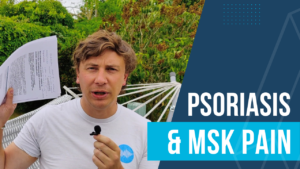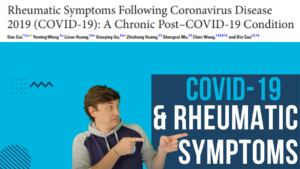Intro
Hypermobility is common in Physio clinics the world over, over a series of blogs I hope to convey my current understanding of the factors at play with regards to diagnosis and management of these individuals. I would like to take this opportunity to say this is MY synthesis of available evidence and experience of working with these individuals. I am perfectly happy to be challenged and corrected as I feel I have a lot to learn about this highly complex group!
This blog will outline when we might consider the attending individual to have systemic effects related to their hypermobility warranting referral for medical review. If you didn’t read part 1 yet, please give that a look over first.
PLEASE REMEMBER – THIS BLOG IS NOT A REPLACEMENT FOR CLINICAL REASONING, IF YOU ARE UNSURE GET ADVICE

For a number of years there have been guides on which symptoms to look out for in individuals who may have hypermobile joints that can help us as clinicians, the “Beighton” and “Brighton” scores are the most famed of these. The Beighton score looks at 9 areas for hypermobility and the higher the score the more likely a “generalised hypermobility” would be present. The Brighton score includes the Beighton but with the addition of extra-articular features such as skin thus giving a higher likelihood of a “Hypermobility Syndrome”.
It is important to have an understanding of these associated symptoms and signs for a number of reasons. In people presenting without a diagnosis, recognition is key, it will help to ensure appropriate management. In those presenting with a pre-existing diagnosis it will help to understand the effects/side effects of proposed therapy interventions.
Aside from the obvious joint related symptoms such as pain and laxity, there are a LOT of potentially associated symptoms. Some of these will affect therapy interventions to a greater or lesser degree but we can explore that a later date. Lets concentrate on recognition and referral for now.
The hypermobility syndromes are a spectrum, it is certainly not necessary to refer every person with excess mobility or laxity in joints for a Rheumatologist review but it is important that we understand the complex blend of relating symptoms to the syndrome or them being a separate medical issue requiring investigation. As such my general rule is that symptoms suggestive of an autonomic issue or related to the gut then I deem these outside of my “wheelhouse” and refer out to appropriate medical professionals (usually a Rheumatologist).
In the era of the internet some will attend with a preconceived idea of a referral being necessary and in some cases this will be the correct course of action and in others it will be an over medicalisation of their condition but at this time the best course of action is to take this on a case by case basis.
These symptoms indicating an outward referral can mostly be found in the Brighton criterias “Minor Criteria” notably these include, multi joint dislocations or multiple dislocations of the same joint, Marfanoid habitus and skin related issues (stretchy, easy bruising, abnormal scarring). Not included in the score are autonomic issues namely POTS (postural orthostatic tachycardia syndrome) and intestinal dysmotility.
As such my advice really is the following: an onward referral is to be considered when an individual presents with multiple hypermobile joints (beighton 4+) and at least one of the symptoms listed above. The location of the referral will depend mostly on your available referral pathways so become familiar with these.
The third blog in this series will look at types of Hypermobility syndrome, I hope that this will help to combine this and part 1 to help with the clinical reasoning process. Please feel free to ask questions or point me in the direction of further information!
As usual thanks for reading and I hope that you find this useful.
Great resources are the following paper and the https://hypermobility.org website.
Castori, M., Tinkle, B., Levy, H., Grahame, R., Malfait, F. and Hakim, A., 2017, March. A framework for the classification of joint hypermobility and related conditions. In American Journal of Medical Genetics Part C: Seminars in Medical Genetics(Vol. 175, No. 1, pp. 148-157).


